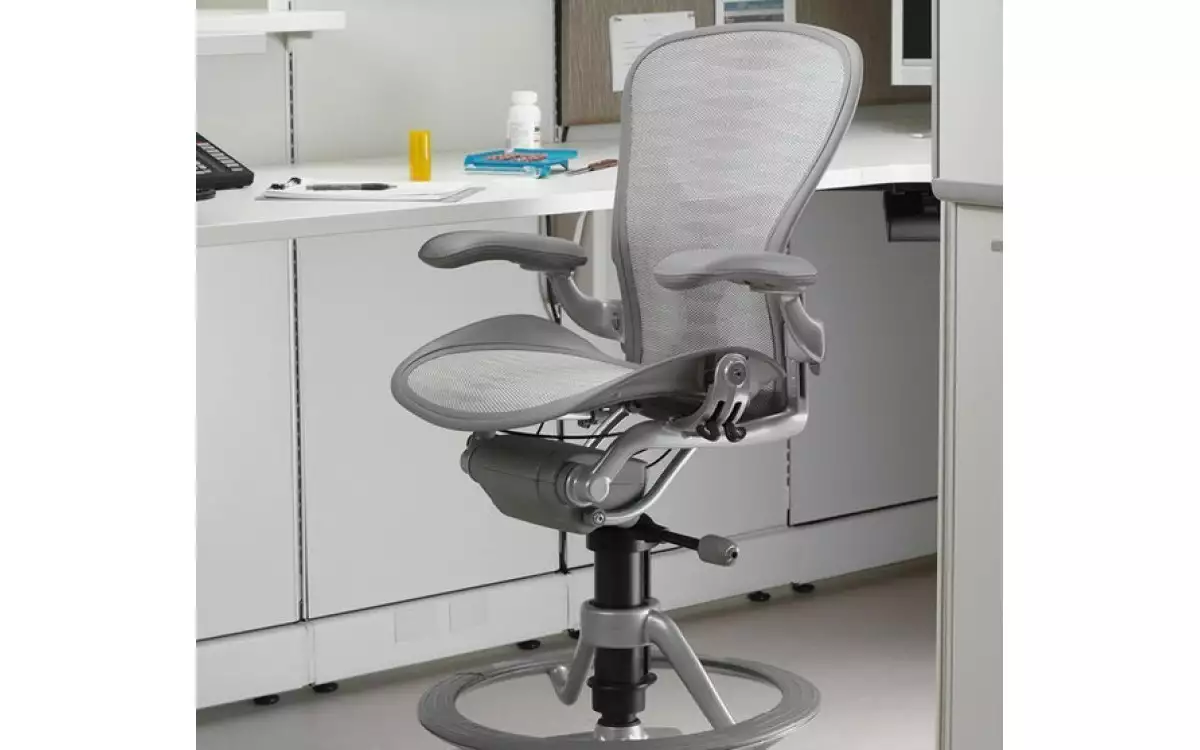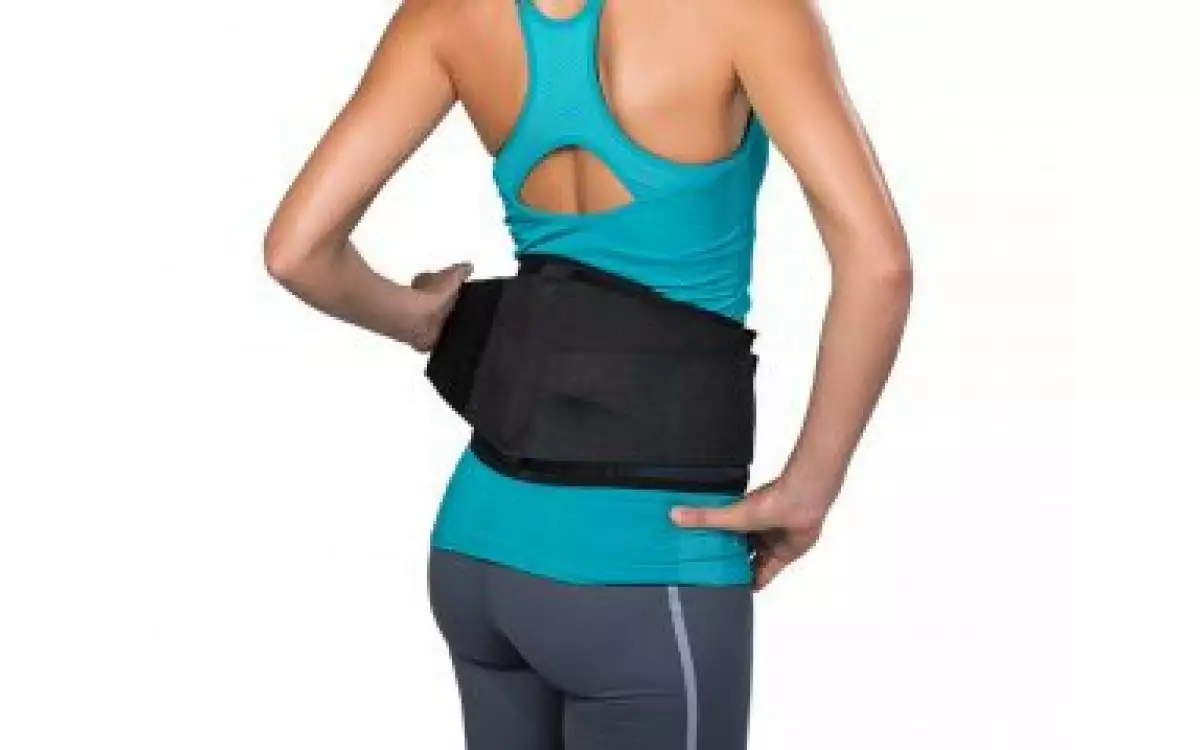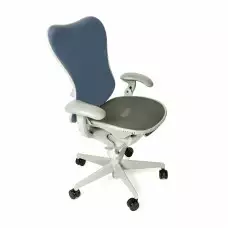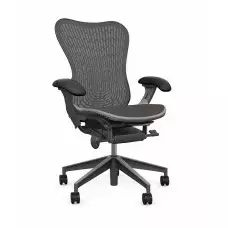According to the Mayo Clinic Cervical Spondylosis is defined as, "a general term for age-related wear and tear affecting the spinal disks in your neck. As the disks dehydrate and shrink, signs of osteoarthritis develop, including bony projections along the edges of bones (bone spurs)". The Mayo Clinic also says that, "more than 85 percent of people older than age 60 are affected by cervical spondylosis". Cervical Spondylosis is a condition that is often developed by the laboring office worker over years and years of sitting in the cubicle hunched over. Although Cervical Spondylosis is not something that always has symptoms, their are a few symptoms that can be easily recognized, especially when you're sitting in a non-adjustable and absent headrest chair (the basic chair).

"Sitting for extended periods of time can be hard on the spine. Having a chair with good ergonomic support can help support the spine. In addition to chairs with ergonomic support, it is also recommend that one take a ten minute break to walk around and stretch for every hour of desk work." - Emily Elder, Chiropractic Student, University of Western States
Symptoms
- Something that you should be aware of is tingling, numbness and possible weakness in the hands, feet or legs.
- The next symptom is blatantly recognizable. That is if you're lacking coordination or having difficulty walking.
- Another recognizable symptom is loss of bladder or bowel control.
All three of these symptoms are obvious signs that you need to speak to a doctor about Cervical Spondylosis. There are two questions that also must be addressed here in regards to Cervical Spondylosis. The first is, "How are these symptoms caused?" and "How do I prevent these symptoms?"

Causes
As we live our lives, we get older every second. The cartilage in our backbones and neck start to tear becasue we naturally over use it. A lot of this is to blame because of the chairs most office working Americans sit in each and every day. You may ask, "How does a chair cause the depletion of my cartilage in my neck and backbones?" It does because when you sit in a non-ergonomic chair (a chair that does not have a headrest and adjustable back support) you are forced to use your neck and back muscles twice as much, thus creating over use in those specific areas. Here are a few more specific causes of Cervical Spondylosis.
- Dehydrated Disks: Disks are like pillows between the vertebrae of your spine, and over time these pillows (disks) begin to shrink, thus causing more bone on bone contact. The onset of dehydrated disks can be linked to over use of neck and back muscles. People who use non-ergonomic chairs are much more susceptible to Cervical Spondylosis because there's no headrest or flexibility mechanics in the chair.
- Herniated Disks: This is when a disk, a jelly-like structure with an outer exterior that helps create the spine, bulges out of place. When this jelly-like structure breaks through the tough exterior it creates a tear which causes gruesome irritability and possibly numbness and weakness. Herniated disks are a possible cause because they feature wear and tear of disks just as Cervical Spondylosis does. Wear and tear of disks is also caused from over use of back muscles and underuse of leg and thigh muscles. When using normal chairs, all your muscle use is focused to your neck, thus making your chances for a herniated disk much higher.
- Bone Spurs: Degeneration of disks often creates extra bone in order to compensate for the loss of the disks. This often pinches the spinal cord and nerves causing pain and irritability. Bone spurs are linked to?Cervical Spondylosis because this is a major sign of degeneration of disks and Cervical Spondylosis includes disk degeneration.
- Stiff ligaments: Ligaments are the parts of the body that allow for flexibility. They're the tissue that connect bone to bone, and when this tissue begins to stiffen up it makes your neck less flexible, which is a cause to osteoarthritis in your neck, and is a big factor in Cervical Spondylosis. Stiff ligaments in the neck are caused when your neck is stalled in the same position for long periods of time. When sitting in non-adjustable chairs you are forcing your neck to stay in the same position. This in turn leads to ligaments stiffening.
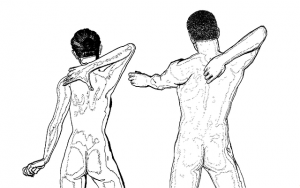
"The spine acts like a kinetic chain, and often times neck pain can be traced to lack of lower back support." - Emily Elder, Chiropractic Student, University of Western States
Prevention
Cervical Spondylosis is an ugly and painful disease that can severely hinder ones lifestyle. It's a disease that develops from a combination of aging and poor lifestyle habits. Although many of the causes of Cervical Spondylosis have strong ties to old age, there are ways to slow the onset of the things that cause Cervical Spondylosis such as herniated disks, bone spurs, dehydrated disks and stiff ligaments. Below features three ways to keep Cervical Spondylosis far far away from your sacred temple also known as your body.
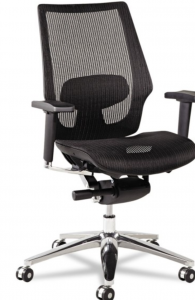
The first thing that many people with Cervical Spondylosis do in order to prevent this dreadful disease is that they do yoga. Yoga is a great way to engage all the muscles in your body. Yoga specifically focuses on full-body flexibility and especially pinpoints your back. Yoga also improves strength, which is key to preventing Cervical Spondylosis. There are ten specific yoga poses to focus on when you're being keen about preventing, or even treating Cervical Spondylosis. These poses are Surya Namaskar, Matsyasana, Bhujangasana, Makarasana, Bal-Shayanasana, Ardha Naukasana, Ardha Salbhaasana, Shanshank-Bhujangasana, Kohni Chalana, Marjariasana. The two most important of the ten poses that help prevent Cervical Spondylosis is Matsyasana (fish pose) and Ardha Naukasana (Half Boat Pose). Matsyasana helps build both flexibility and strength in the entire vertebral column, which helps over come stress and strain. Stress and strain in the vertebral column often leads to Cervical Spondylosis. Ardha Naukasana is extremely important to focus on as well because it helps alleviate cervical and back problems, which is usually the first sign of Cervical Spondylosis.
The next form of prevention is home treatment. This means doing home remedies such as taking Advil, using heating and cold pads and getting frequent exercise. Taking an anti-inflammatory such as Advil allows for the pain to subside if you feel the sense that you are starting to get symptoms. The use of heating and cold pads allow your muscles to heal after a long day of use. After you finish up scribbling down pointless notes in your cubicle at work you should make sure to throw on a heating pad. That normal desk chair tends to overwork your neck muscles, and the heating or cold pad will reduce the swelling or keep your neck from possibly swelling up. In final, exercise is crucial to preventing Cervical Spondylosis. This is the best way to prevent Cervical Spondylosis from happening. Staying active usually means your neck muscles are not working as hard as they do when you are in a seated position. So stay active to be Cervical Spondylosis free.

The third and final way to prevent yourself from getting Cervical Spondylosis is to use ergonomic chairs when sitting down for long periods of time. The traditional office chair does two things that amplify the consequences of Cervical Spondylosis. The first is that traditional office chairs force you to keep a complete stiffness in you neck because you must remain in the same sitting position the entire time while in the seat. Juxtaposed to the innovative ergonomic office chair, this chair allows for you to relax your head on a headrest, and it also allows you to adjust your sitting position because of the flexible back support. During the day when you want to lean back to take a break and relax you can do so on your chair without the consequence of possibly injuring your neck. The second reason that the traditional office chair is a detriment to your health and increases the risk of you getting Cervical Spondylosis is because it does not allow you to sit at the proper ninety degree angle. When sitting in a chair, the best way to prevent back and neck injury is to have your knees positioned at a ninety degree angle. When using the traditional office chair most people are often too tall or too short and are not able to achieve the desired leg angle. With the ergonomic office chair, you are able to constantly adjust because of the flexibility features, which makes sure that you eventually find your desired leg angle.
How do I get one?
Ergonomic office chairs are fully loaded and aesthetically pleasing. They also usually run at an above average price because of their phenomenal benefits, but with Beverly Hills Chairs the price is nothing short of praiseworthy. This company offers high quality ergonomic office chairs at anywhere from 25% to 75% off. Ergonomic chairs are make or break when it comes to protecting your health and leading a happy and healthy lifestyle.




